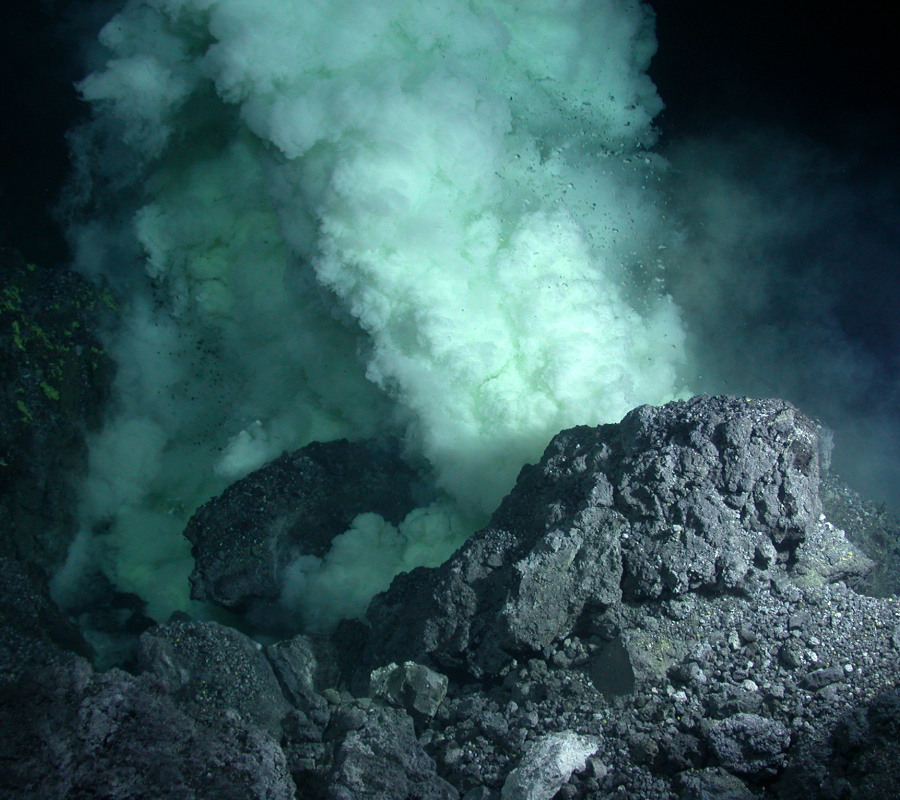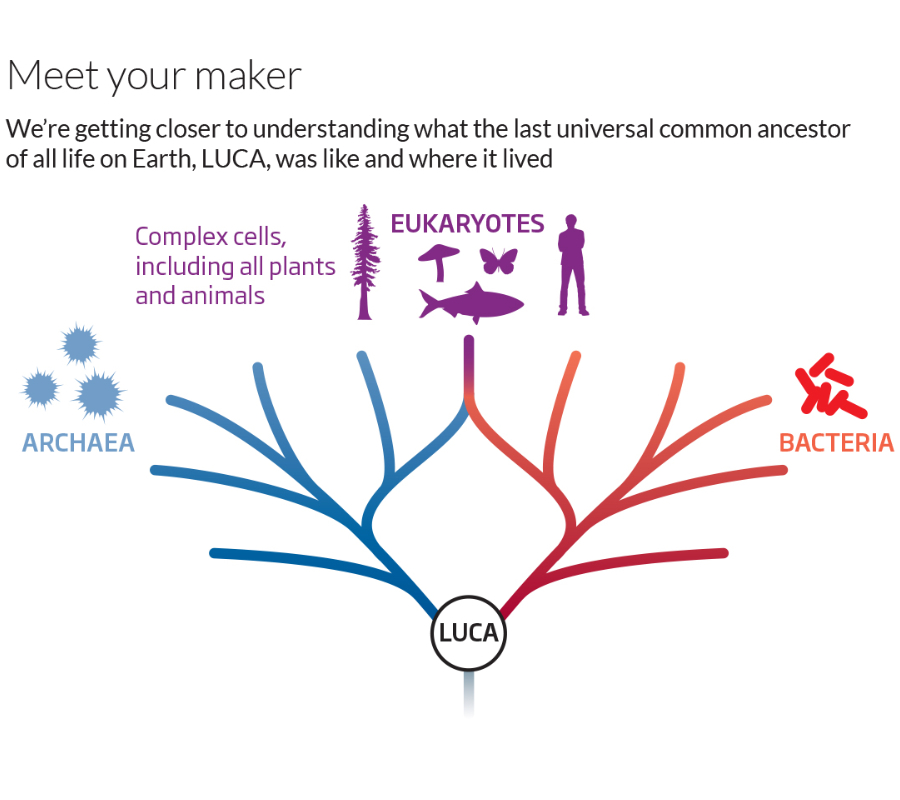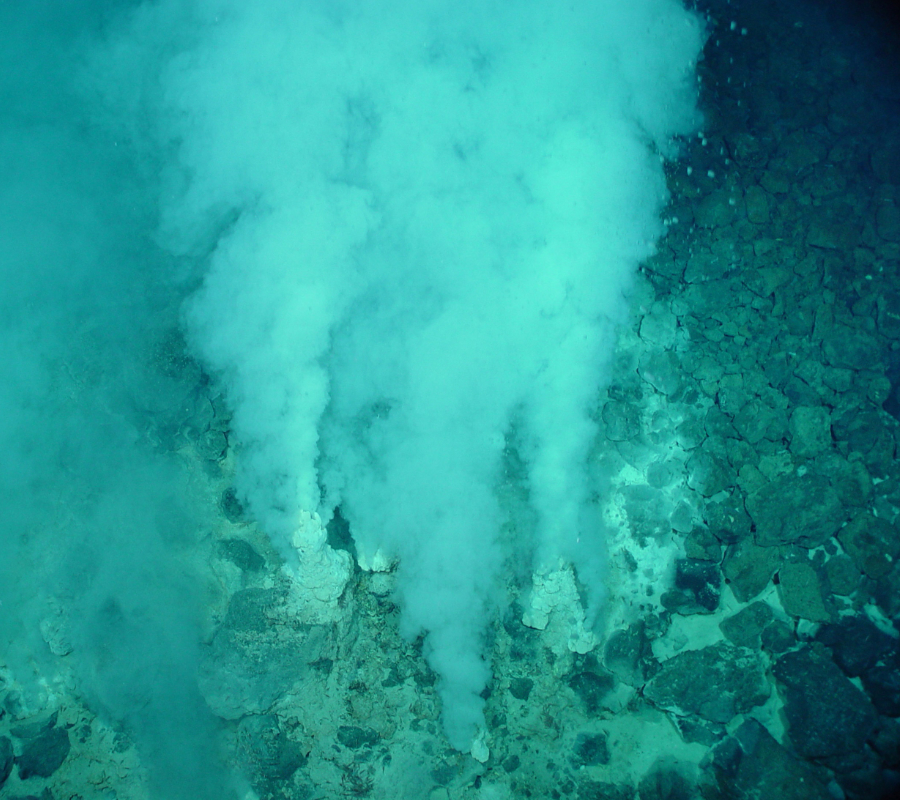A study published in Nature shows how scientists from the Heinrich Heine University in Düsseldorf, Germany, found out that the Last Universal Common Ancestor (LUCA) came to be thanks to Earth’s hydrothermal vents.
According to lead researcher Bill Martin, no one had previously presented evidence to support this finding. The team analyzed 6.1 million genes from species formed by a single cell. They managed to create a family tree for each gene and then used computer modeling to establish links between the oldest domains of living beings. These would be bacteria, which is comprised of microorganisms without a nucleus, and archaea, which were initially classified as bacteria but it was then discovered that archaea have a different cellular structure.

The research yielded 355 genes that were thought to be present in LUCA
It seems that LUCA was an anaerobic organism capable of obtaining nutrients from simple substances in its surroundings. LUCA was only half-alive, as its classification of “living being” was dependent on the geochemistry at the moment. The organism was found to be able to synthesize ATP and to metabolize carbon and nitrogen.
LUCA also had enzymes, compounds able to alter chemical reactions, specifically nitrogenases and hydrogenases. All of these clues point out to the fact that LUCA was able to live off H2, CO2, and N2, gasses that are naturally found in deep-sea hot vents. Besides ATP, LUCA presented high amounts of Iron(II) sulfide, whose clusters are regarded as “relics of ancient metabolism” and is also found in hydrothermal environments.
Did our oldest common ancestor live in volcanic hot springs? https://t.co/b9T3oTwTzR pic.twitter.com/uVLrwKv8Ce
— Popular Science (@PopSci) July 25, 2016
The origin of our common ancestor
Besides understanding LUCA’s origin, researchers learned important facts about its descendants, as the 355 resulting trees diverted into what scientists regard as the continuation of evolving life. Bacteria dependent on H2 were linked to LUCA, as most of these are common on the earth’s surface. These bacteria, such as the Clostridia class, responsible of gangrene, colitis, and tetanus, have evolved to survive from the assimilation of methyl compounds, which are characterized by one carbon atom bonded to three hydrogen atoms. Clostridia and Methanogens still exist to this day.

The crucial evidence was that natural H2 only comes from two sources. The first is fermentation, which at the time of LUCA’s origin was impossible, as there were no other biological compounds able to be fermented. The second process is known as serpentinization, where rocks rich in iron from the earth’s mantle become oxidized, leading to the formation of H2.
The genes found to be linked to LUCA were determined not to be of random appearance in modern organisms, but rather are the result of an ancient evolutionary process. The esteemed age of LUCA appears to be 4 billion years old when the earth was going through an event known as the Late Heavy Bombardment (LHB).
LHB saw a gargantuan amount of asteroids colliding with Mercury, Venus, Earth and Mars. The evidence mostly comes from the lunar samples that Apollo scientists have analyzed throughout the years. As LHB occurred, earth’s oceans boiled and the atmosphere lost a substantial amount of oxygen, providing the ideal environment for LUCA to be formed.
A major advancement in understanding evolution
The study has been highlighted as an important step in evolutionary biology, as only 40 years ago there was no evidence as to whether a living being could survive in such extreme conditions as those of earth as LHB occurred.
The research’s initial efforts took place in 1977 when a group of marine biologists from the U.S. Geological Survey published their findings regarding the organisms and the fluids present in hydrothermal vents. Later, it was found out that similar organisms were able to survive in hot springs, Antarctic ice and submarine caves. These findings revealed that life may have begun at times when earth’s condition was still regarded as inhospitable by scientists.

By understanding LUCA’s biological mechanisms, it is possible to have a grasp on what geological factors propelled evolution billions of years ago. Although bacteria and archaea related to LUCA are known to transfer genetic material among species, the research team is confident that they managed to find the most primitive samples of gene building blocks in any current living cellular organism.
Even when LUCA is the oldest known ancestor of living species, it may not be the first living thing to appear on earth. The fact that earth is 4.54 billion year sold allows for plenty of opportunity for previous “attempts” at producing life and failing, probably because of the environmental obstacles. Where LUCA’s real significance lies, is in the fact that it was the first organism able to pass its genes onto the forthcoming generations, surviving up to this point in time.
Knowing where living beings come from will allow scientists to know where are they headed. The origin of life has been one of the most enigmatic questions all throughout human history, many times attributed to celestial beings or even extraterrestrial sources. It seems that thanks to the finding of LUCA, humans may be one step closer to discovering the secret behind earth’s most unique asset.
Source: Science
